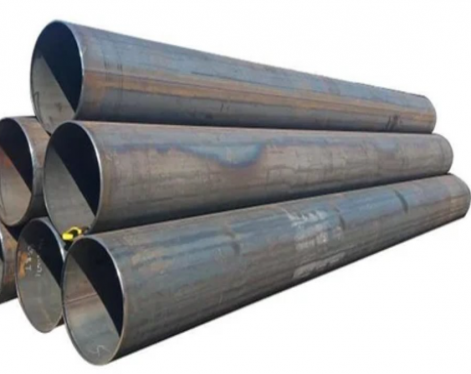Stainless steel pipe is a hollow long round steel, mainly used in petroleum, chemical, medical, food, light industry, machinery and instrumentation and other industrial pipelines and mechanical structural parts. In addition, when the bending and torsion strength are the same, the weight is lighter, so it is also widely used in the manufacture of mechanical parts and engineering structures. It is also often used as furniture and kitchen utensils.
Stainless steel hardness test:
Stainless steel pipes generally use three hardness indexes, Brinell, Rockwell, and Vickers to measure their hardness.
For stainless steel pipes with inner diameter above 6.0mm and wall thickness below 13mm, the W-B75 Webster hardness tester can be used. It is very fast and easy to test, and is suitable for fast and non-destructive qualification inspection of stainless steel pipes. For stainless steel pipes with an inner diameter greater than 30mm and a wall thickness greater than 1.2mm, use Rockwell hardness tester to test HRB and HRC hardness. For stainless steel pipes with an inner diameter greater than 30mm and a wall thickness less than 1.2mm, the surface Rockwell hardness tester is used to test the hardness of HRT or HRN. For stainless steel pipes with an inner diameter of less than 0mm and greater than 4.8mm, use a special Rockwell hardness tester for pipes to test the hardness of HR15T. When the inner diameter of the stainless steel pipe is greater than 26mm, the hardness of the inner wall of the pipe can also be tested with a Rockwell or surface Rockwell hardness tester.
Expansion information:
Brinell hardness
Among the stainless steel pipe standards, Brinell hardness is the most widely used, and the hardness of the material is often expressed by the indentation diameter, which is both intuitive and convenient. But it is not suitable for steel pipes of harder or thinner steel.
Rockwell hardness
The Rockwell hardness test of stainless steel pipe is the same as the Brinell hardness test, which is the indentation test method. The difference is that it measures the depth of the indentation. Rockwell hardness test is currently a widely used method, among which HRC is second only to Brinell hardness HB in steel pipe standards. Rockwell hardness can be used to measure metal materials ranging from extremely soft to extremely hard. It makes up for the difference of the Brinell method and is simpler than the Brinell method. The hardness value can be read directly from the dial of the hardness machine. However, due to its small indentation, the hardness value is not as accurate as the Brinell method.
Vickers hardness
The stainless steel tube Vickers hardness test is also an indentation test method, which can be used to determine the hardness of very thin metal materials and surface layers. It has the main advantages of Brinell and Rockwell method, and overcomes their basic shortcomings, but it is not as simple as Rockwell method. Vickers method is rarely used in steel pipe standards.
Stainless steel hardness test:
Stainless steel pipes generally use three hardness indexes, Brinell, Rockwell, and Vickers to measure their hardness.
For stainless steel pipes with inner diameter above 6.0mm and wall thickness below 13mm, the W-B75 Webster hardness tester can be used. It is very fast and easy to test, and is suitable for fast and non-destructive qualification inspection of stainless steel pipes. For stainless steel pipes with an inner diameter greater than 30mm and a wall thickness greater than 1.2mm, use Rockwell hardness tester to test HRB and HRC hardness. For stainless steel pipes with an inner diameter greater than 30mm and a wall thickness less than 1.2mm, the surface Rockwell hardness tester is used to test the hardness of HRT or HRN. For stainless steel pipes with an inner diameter of less than 0mm and greater than 4.8mm, use a special Rockwell hardness tester for pipes to test the hardness of HR15T. When the inner diameter of the stainless steel pipe is greater than 26mm, the hardness of the inner wall of the pipe can also be tested with a Rockwell or surface Rockwell hardness tester.
Expansion information:
Brinell hardness
Among the stainless steel pipe standards, Brinell hardness is the most widely used, and the hardness of the material is often expressed by the indentation diameter, which is both intuitive and convenient. But it is not suitable for steel pipes of harder or thinner steel.
Rockwell hardness
The Rockwell hardness test of stainless steel pipe is the same as the Brinell hardness test, which is the indentation test method. The difference is that it measures the depth of the indentation. Rockwell hardness test is currently a widely used method, among which HRC is second only to Brinell hardness HB in steel pipe standards. Rockwell hardness can be used to measure metal materials ranging from extremely soft to extremely hard. It makes up for the difference of the Brinell method and is simpler than the Brinell method. The hardness value can be read directly from the dial of the hardness machine. However, due to its small indentation, the hardness value is not as accurate as the Brinell method.
Vickers hardness
The stainless steel tube Vickers hardness test is also an indentation test method, which can be used to determine the hardness of very thin metal materials and surface layers. It has the main advantages of Brinell and Rockwell method, and overcomes their basic shortcomings, but it is not as simple as Rockwell method. Vickers method is rarely used in steel pipe standards.
Previous:Non-destructive Testing









